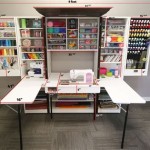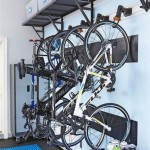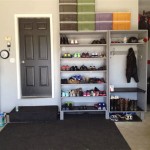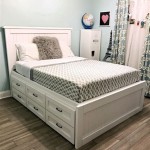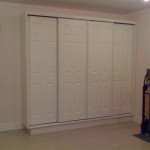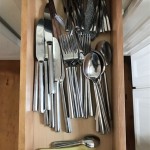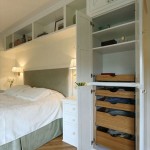The Perfect Knife Storage Block For Your Kitchen Drawer
Maintaining a well-organized kitchen is essential for efficient cooking and a pleasant culinary experience. Knives, being indispensable tools for any chef, require proper storage not only to preserve their sharpness and longevity but also to ensure safety in the kitchen environment. While traditional countertop knife blocks have long been a staple, the increasing popularity of kitchen drawer knife storage blocks offers a space-saving and child-safe alternative.
This article will delve into the advantages of using knife storage blocks designed for kitchen drawers, highlighting the key features and considerations when selecting the perfect one for your needs. Factors that determine whether a particular block is suitable will be examined, along with the benefits it offers in terms of organization, space optimization, and safety.
Space Optimization and Ergonomic Design
In modern kitchens, counter space is often at a premium. Traditional knife blocks tend to occupy a considerable footprint on the countertop, reducing the available area for food preparation and other kitchen activities. Drawer knife blocks address this issue by relocating knife storage to an unused or underutilized drawer, freeing up valuable counter space. This is particularly advantageous in smaller kitchens or those with limited countertop areas.
The ergonomic design of drawer knife blocks is another crucial consideration. A well-designed block should allow for easy insertion and removal of knives. The slots should be appropriately sized to accommodate various knife types, from paring knives and utility knives to chef's knives and bread knives. Furthermore, the angle and spacing of the slots should prevent knives from rubbing against each other, minimizing the risk of damage to the blades. Some designs incorporate additional features such as angled slots for easier access or universal slots that can accommodate knives of different widths and shapes.
The material used in the construction of the drawer knife block also contributes to its ergonomic functionality. Common materials include wood (such as bamboo or beechwood), plastic, and composite materials. Wood offers a natural aesthetic and is generally gentle on knife blades. Plastic blocks are often easier to clean and maintain, while composite materials can provide a combination of durability and aesthetic appeal. The chosen material should be non-porous and resistant to moisture and bacteria growth.
The size and dimensions of the drawer knife block are vital to ensure it fits comfortably inside the designated kitchen drawer. Prior to purchase, it is essential to measure the interior dimensions of the drawer to determine the maximum allowable dimensions of the block. The height of the block is particularly important, as it must not interfere with the closing of the drawer. A block that is too tall will prevent the drawer from closing properly, rendering it unusable.
Design considerations extend beyond just the dimensions and material. Some drawer knife blocks offer features such as anti-slip feet or a weighted base to prevent the block from sliding around inside the drawer when the drawer is opened or closed. This helps to maintain the organization of the drawer and prevent the knives from shifting and potentially causing injury. The overall design should also prioritize stability and prevent the block from tipping over when knives are inserted or removed.
Enhanced Safety and Childproofing
Knife safety is paramount in any kitchen. Countertop knife blocks, while convenient, can pose a safety risk, especially in households with young children. Children may be tempted to reach for the knives, potentially leading to serious injuries. Drawer knife blocks offer a significant advantage in terms of safety by keeping the knives out of sight and out of reach of children.
By storing knives inside a drawer, access to them is restricted, significantly reducing the likelihood of accidental cuts or injuries. This is particularly important for families with small children or individuals who are prone to distractions while cooking. The drawer acts as a physical barrier, preventing children from accessing the knives without adult supervision.
Moreover, drawer knife blocks can be incorporated into a broader childproofing strategy for the kitchen. Child safety locks can be installed on the drawer containing the knife block, further restricting access to the knives. This provides an additional layer of protection and peace of mind, especially for parents of young children. The combination of a drawer knife block and a child safety lock creates a secure and childproof environment in the kitchen.
Beyond child safety, drawer knife blocks also contribute to overall kitchen safety by preventing accidental cuts during routine tasks such as searching for utensils or rummaging through drawers. With knives stored neatly and securely in their designated slots, the risk of encountering a sharp blade unexpectedly is significantly reduced. This is particularly important for individuals who have limited visibility or dexterity.
The material and construction of the drawer knife block can also contribute to its safety features. Blocks made from durable and sturdy materials are less likely to break or splinter, minimizing the risk of injury from sharp fragments. The slots should be precisely sized to securely hold the knives in place, preventing them from falling out or shifting during drawer movement. Additionally, rounded edges and corners on the block's exterior can help to prevent accidental bumps and scrapes.
Maintaining Knife Sharpness and Hygiene
Proper knife storage is essential for maintaining the sharpness and longevity of knife blades. Improper storage can lead to dulling of the blades, requiring more frequent sharpening and ultimately shortening the lifespan of the knives. Drawer knife blocks provide a protected environment for knives, preventing them from coming into contact with other utensils or surfaces that can damage the blades.
When knives are stored loosely in a drawer, they can rub against other objects, causing microscopic chips and scratches on the blades. This gradually dulls the cutting edge, making it more difficult to chop, slice, and dice food with precision. A drawer knife block prevents this by keeping each knife separated and securely held in its designated slot. This minimizes friction and protects the blades from damage.
Furthermore, drawer knife blocks can help to prevent the build-up of moisture and bacteria on the knife blades. Storing knives in a damp or poorly ventilated environment can promote the growth of mold and bacteria, which can contaminate food and pose a health risk. A well-designed drawer knife block allows for adequate air circulation around the blades, helping to keep them dry and hygienic.
The choice of material for the drawer knife block also plays a role in maintaining knife hygiene. Non-porous materials such as plastic or certain types of wood are less likely to absorb moisture and bacteria than porous materials. These materials are also easier to clean and disinfect, helping to prevent the spread of germs in the kitchen. Regular cleaning of the drawer knife block is essential to maintain a sanitary environment for knife storage.
Some drawer knife blocks feature additional design elements that promote hygiene. For example, some blocks have drainage holes or channels to allow water to escape if the knives are stored while still slightly damp. Others have removable inserts that can be easily washed and sanitized in the dishwasher. These features make it easier to maintain a clean and hygienic knife storage environment.
To properly care for knives stored in a drawer knife block, it is important to clean and dry them thoroughly after each use before returning them to their slots. This helps to prevent the build-up of food particles and moisture, which can contribute to the growth of bacteria and dulling of the blades. Regular sharpening of the knives is also essential to maintain their cutting performance. A sharp knife is not only more efficient but also safer to use, as it requires less force to cut through food, reducing the risk of slippage and accidental cuts.
In conclusion, selecting the appropriate knife storage block for your kitchen drawer involves carefully considering the factors of space optimization, safety, and maintenance. By prioritizing these elements, one can ensure the preservation of knife sharpness, the enhancement of kitchen safety, and the efficient utilization of space within the culinary environment. The investment in a quality drawer knife block is an investment in both the longevity of your cutlery and the overall functionality of your kitchen.

Knife Block Drawer Storage Insert Cliqstudios

How To Organize A Knife Drawer The Container

How To Organize A Knife Drawer The Container

Knife Block Drawer Insert

Wood Knife Block Insert
Diy Knife And Cutting Board Drawer Queen Bee Of Honey Dos

Best Knife Storage F N Sharp

How To Organize A Knife Drawer The Container

6 Sharp Kitchen Knife Storage Ideas Modernize

6 Sharp Kitchen Knife Storage Ideas Modernize
Related Posts


